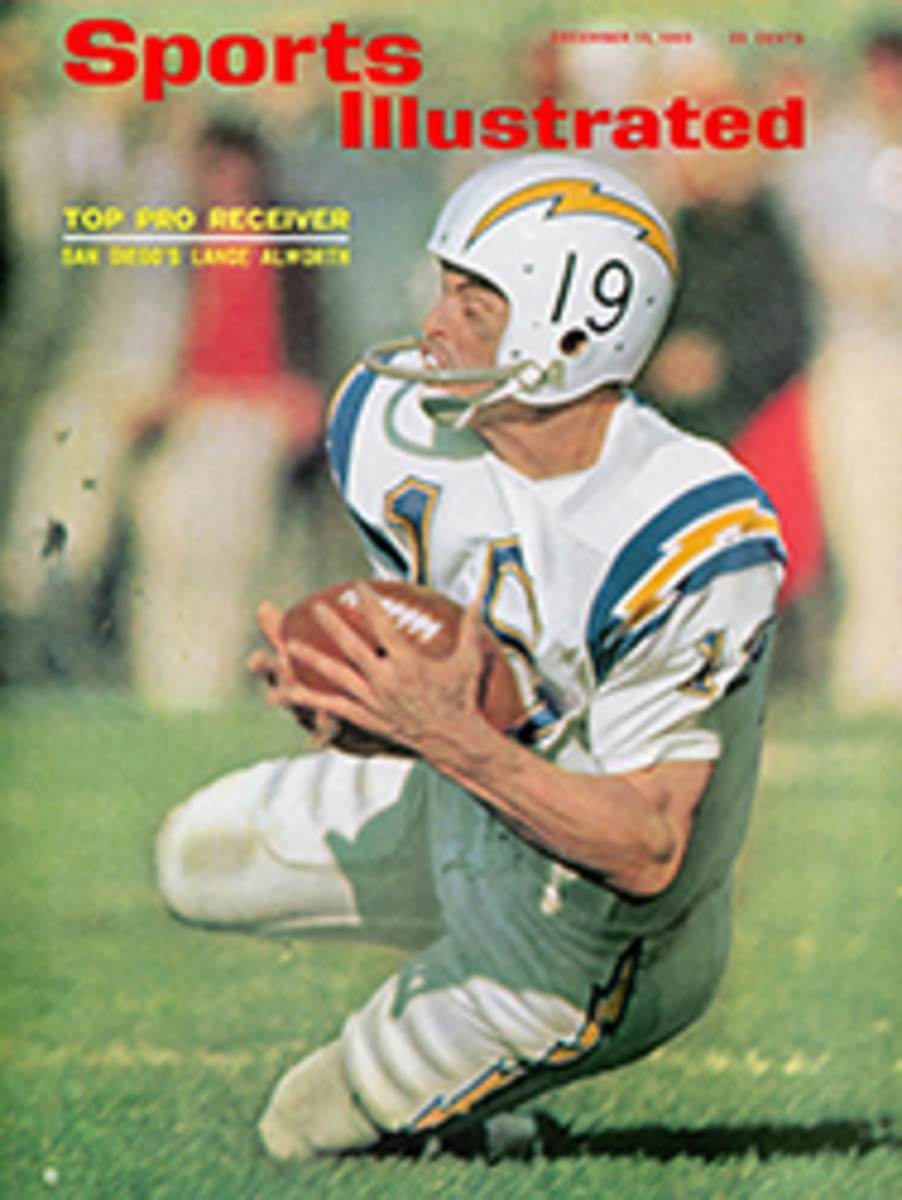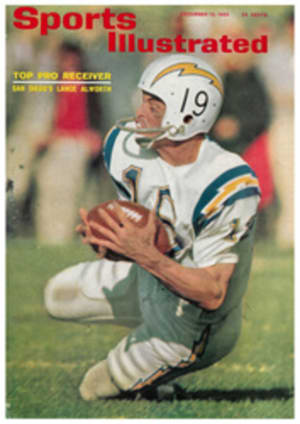
Some grousing about no grouse
Any upland hunter will readily admit that there is no wilder or more elusive game bird in the U.S. than the ruffed grouse. Pointing dogs would admit this, too—if they could bark out a few words—especially those dogs which competed in this year's Grand National Grouse Championship held in Allegheny National Forest near Marienville, Pa.
Despite clean, crisp air that made for ideal scenting conditions, only two of the 27 pointers and setters who searched some 1,500 acres of carefully manicured field-trial courses in two and a half days had any acceptable work on grouse. The reason was obvious—grouse on this championship course were as rare as smogless days in Los Angeles.
Says Dr. H. E. Beckmeyer, president of the Grand National: "The good grouse dog should go quietly but quickly and directly to the bird, and pin it down before it makes up its mind to run or fly out. Once pinned, the grouse is paralyzed with fear, and it will usually hold position until the handler comes in to flush it."
If the dogs in this year's stake were capable of paralyzing grouse, few got the chance to prove it. Even the classic woods-wise dogs that quartered the course in front of the handlers, hunting every little likely patch of cover with heads held high and tails merrily flagging in the approved fashion, were left with little more to show for their hour-long heats than a good race. The only birds that were paralyzed were those pointed by the new Grand National champion, Brenda Wahoo, a 7-year-old black-and-white pointer bitch owned and handled by Alan Bartholomew of Rochester, N.Y. Brenda Wahoo, better known as Sue, simply happened to be on the right course at the right time. She got the scent of a flock of grouse feeding in the open on red partridgeberries and pinned them down until Bartholomew came in to flush. Five grouse flew out on all sides of Sue, a nerve-racking experience even for a proven field-trial dog. But Sue remained steady to the flush and to the report of Bartholomew's .38-caliber blank pistol.
Only one other dog, Sam L's Nabob, the runner-up, a setter owned by Sam Light, a coal magnate from Punxsutawney, Pa., was credited with a find. But by the time Handler Rich Tuttle reached Nabob the grouse had moved away down a hillside, and before the dog could relocate them and point again the birds flushed. Thus, on the strength of one point, Sue became the 19th Grand National Grouse champion. But Sue's modicum of bird work was anything but unusual in this trial—10 of the previous 18 champions have won with only one find.
If anyone had kept an accurate tally sheet during this year's championship stake, he would have counted 10 deer to every grouse seen. Not a few of the dogs found the deer too tempting to pass up, much to the embarrassment of the handlers. Allegheny National Forest is also prime turkey country. In past Grand Nationals several handlers have walked in proudly to their dogs on point and flushed not a grouse but a big gobbler (a dog is not faulted for pointing turkey, but they do not count as grouse). At least three dogs tangled with porcupines, which seem to exude an odor that many a good bird dog just can't resist, and several others got so carried away with the sport of coursing through the woods that when they did catch the scent of birds they did not have time to point before the grouse flushed.
Considering the available cover on most of the two-mile courses, it was hardly surprising that grouse were at a premium. The courses twisted through the kind of open rolling timber that encourages a spirited field-trial dog to run but offers little opportunity to find birds. The only available grouse feed consisted of scattered patches of partridgeberries, blackberries and haw (thorn apple). A few stands of hemlock and some man-made brush piles provided cover, but few birds were found in them. Said one disgruntled handler whose setter had turned in a commendable but typically grouse-less race: "What this is is a grouse trial held in a deeryard. Any respectable grouse hunter and most any bird dog who knows his birds and his cover would just pass this country by."
The Grand National has not always suffered from such a dearth. Says Wilbur A. Hugus, an investment company salesman from Ridgway, Pa. who has handled several grouse champions and who judged at this year's trial: "When these field-trial grounds were first laid out there were plenty of grouse around. Lumbering kept the land relatively open and allowed ground cover and feed to develop. Even forest fires helped. The burned-over areas quickly grew up in blackberries, wild grape and fireweed, all ideal grouse foods. But today there is less lumbering and fires are quickly controlled. Now we have tall timber again, and even with selective cutting and making brush piles with bulldozers there is not enough feed or natural cover. As a result, the grouse population has been steadily declining on all three Grand National trial areas [the other two are at Gladwin, Mich. and Pharsalia, N.Y.]. Even when there is an unusually good nesting season right at the peak of the grouse cycle, it makes little difference. The sad truth is that grouse are just not attracted to our field-trial grounds."
The Grand National must be held on a course where the cover is open enough so that the judges and the handlers can watch the dog's race and follow the dog into a point. The better the cover is for grouse the worse it is for a trial.
The frustrations of running a good grouse dog over a birdless course have encouraged several handlers over the years to produce their own birds. There are tales of handlers who followed their dogs into thick covers, yelled, "Point!" and then quickly imitated the whirring sound of a grouse bursting out of cover. The trick rarely was successful. A number of years ago a Michigan handler brought his own live grouse to trials in Pennsylvania. Several weeks before a trial he would hire farm kids to trap grouse, a difficult feat at best, and feed them on apples and corn until trial time. Just before his dog was scheduled to run, the handler would stuff several birds into his voluminous shirt and send his dog out on the course. Directing the dog into a particularly thick cover, he would make sure the judges were watching. He would coax the dog into a staunch point, move out in front of it, beat the brush convincingly with his flushing whip and then, turning his back on the judges, he would furtively unbutton his shirt and let a grouse fly out. Just how many times he got away with it is not known, but he was finally caught with his shirt open and banned from the trial.
For years grouse hunters have insisted that field-trial grouse dogs are no better at finding birds than many ordinary pointers, setters, German shorthairs or Brittany spaniels which are used strictly as gun dogs in the fall.
"That is ridiculous," says Harry Townshend, a longtime grouse hunter and field-trialer from New Haven, Conn. who judged at this year's Grand National. "That's like trying to equate a saddle horse with a Thoroughbred. A good field-trial grouse dog is actually a hopped-up shooting dog that must do everything better. He must run a harder and more spectacular race, and exhibit more class, style and responsiveness to the handler. He must not be a mechanical dog—he does not simply swing back and forth through whatever cover happens to lie ahead of his handler. The dog moves directly to the likely grouse covers with a minimum of direction from the handler."
Considering the money involved in having a dog professionally trained and trialed until it qualifies for the Grand National, it seems a high price to pay just for the privilege of running a dog in what comes awfully close to being a grouseless grouse trial.

